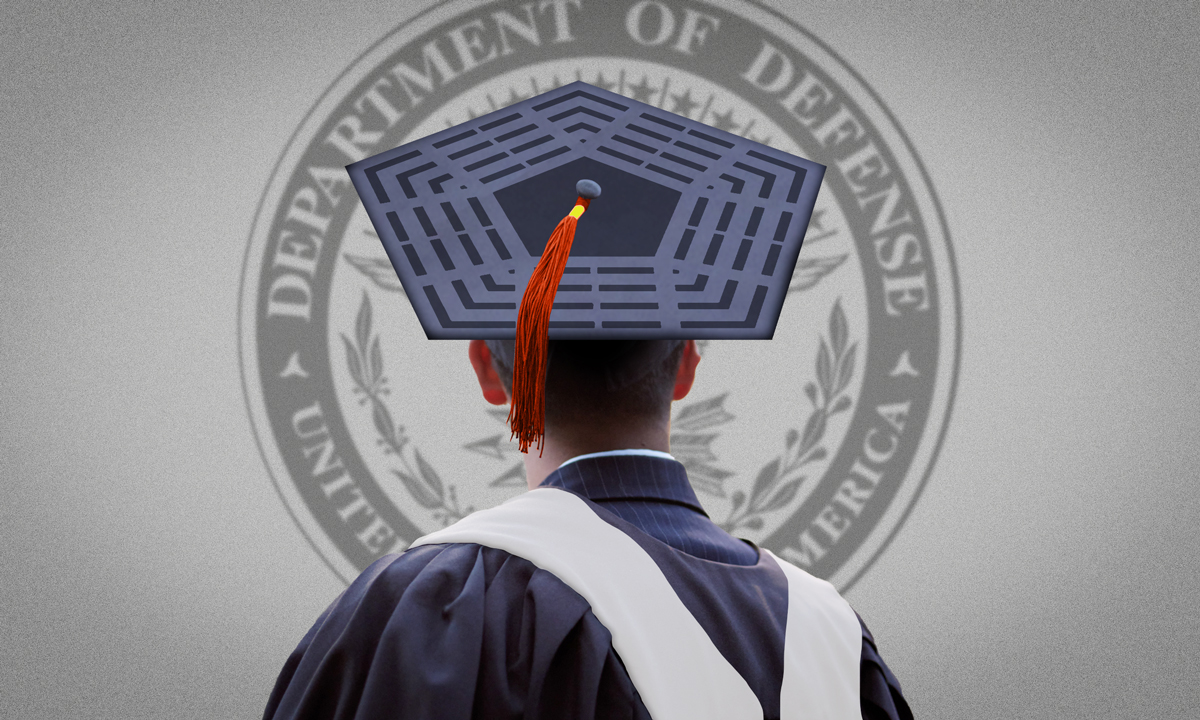Military Service Should Count as a Successful Pathway for Students. But First We Need Better Data About Graduates
Aldeman: Graduates should be ready to succeed in college, careers or the military. But we struggle to define those pathways in equally rigorous ways.

Get stories like this delivered straight to your inbox. Sign up for The 74 Newsletter
Students who graduate from high school should be ready to succeed wherever life takes them, whether that be college, a career or the military.
That might seem like an innocuous statement, but states are struggling to define those pathways in equally rigorous ways. Moreover, a lack of reliable data on who actually serves in the military means that it’s being left out as a successful post-high school outcome.
Let’s start with the college track because it’s the largest and easiest to define. About two-thirds of high school graduates go directly into some form of postsecondary education. That number is down slightly in recent years, but states have built sophisticated data systems to track public school students from K-12 into higher education. If students go to a private school or leave the state, a nonprofit called the National Student Clearinghouse has data on 99% of postsecondary students nationwide. That data allows any state or school district in the country to find out, for a nominal fee, how many of their students enroll and persist through higher education.
In contrast, it’s harder to define a successful outcome on the career side. More than half the states are now counting whether high school students earn “industry recognized credentials.” This is admirable work, but states are struggling to balance encouraging students to follow a wide variety of pathways on one hand, while also ensuring that all of those options are equally rigorous. State lists of allowable credentials routinely run into the hundreds, and a 2020 report found that the most common credential students earn was “Microsoft Office Specialist.” That report concluded, “many of the credentials earned by K-12 students carry little currency with employers, and therefore offer questionable career value to students.”
This lack of rigor shows up in depressingly small income gains. For example, a study by Matt Giani at the University of Texas found that students who earned a credential had somewhat higher employment rates, but the median earnings of recent high school graduates with a credential was barely over $10,000 a year. A similar study out of Florida found that, five years after high school graduation, those who had completed a certificate earned about $600 more than those without one.
Contrast the situation on the career side with military service. Military service is not only a noble career, it’s also a strong pathway into the middle class. And yet, states don’t have a good way to get accurate counts of which students serve in the military.
Upon the passage of the Every Student Succeeds Act (ESSA) in 2015, 10 states said they were planning to use military service as one of their indicators of student success. Unfortunately, without a good way to collect that data, they were forced to remove military service as a success indicator, treat it as an optional measure for some schools, or fall back on self-reported data, effectively putting the burden of proof of military service on individual schools and districts.
To address this problem, a number of state education chiefs are working behind the scenes to ask the Department of Defense (DoD) for help in solving this data challenge. (Disclosure: I’ve been helping the states craft that request.)
This is not just a wonky data issue, because the military stands to gain from a secure but accurate data-sharing process as well. If military service counted as a successful pathway for students, that might indirectly help the armed services meet their recruitment goals.
To be sure, this is delicate ground. If states begin working with the DoD to solve this data challenge, there are questions about data security and concerns about not promoting the military above other potential pathways. And students need to be protected from receiving unwanted recruiting pitches. At the same time, this issue needs to be resolved in order to recognize military service as a successful outcome for students who do choose to serve.
This isn’t the first such effort to track military service. Many states have tried to get this type of data in the past, only to be stymied by technical or bureaucratic obstacles. But there’s widespread interest in solving this problem and putting military service on par with other post-high school pathways.
Get stories like these delivered straight to your inbox. Sign up for The 74 Newsletter

;)
